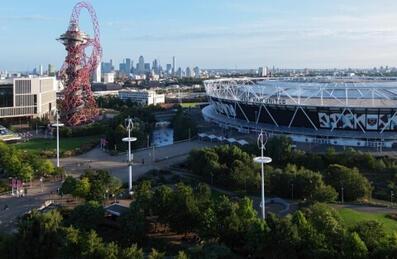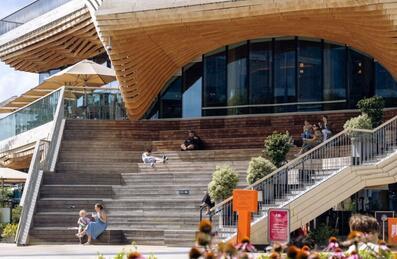
Popular Searches:
Keep up to date
Sign up today for exclusive offers and incredible experiences you won’t want to miss at Queen Elizabeth Olympic Park.
Sign up nowRoyal Mail introduces new E20 postcode for the Olympic Park
Royal Mail introduces new E20 postcode for the Olympic Park
Press Release 18/03/2011
Royal Mail today announced that a new E20 postcode district has been introduced for the Olympic Park.
- Olympic Stadium allocated its own postcode – E20 2ST
- Over 100 postcodes allocated to developments being built across the Park
- Postcode to serve up to 8,000 planned homes in future Queen Elizabeth Olympic Park
Royal Mail today announced that a new E20 postcode district has been introduced for the Olympic Park.
Royal Mail was the first postal operator to establish a postcode system. The first postal districts were introduced in London in 1857. Its current alphanumeric code system was introduced in the late 1950s.
Royal Mail’s Address Management Unit, which manages a database of over 1.75 million UK postcodes, has introduced the new E20 postcode to accommodate the site which falls across four London boroughs.
The most recent new postcode district to be introduced, prior to E20, was for the Highland community of Morvern last year.
The postcode will serve five new neighbourhoods that the Olympic Park Legacy Company is planning to create after the 2012 Games when the area will be renamed the Queen Elizabeth Olympic Park.
Key venues have been allocated their own individual postcode. The main Olympic Stadium postcode is E20 2ST.
E20 also covers neighbouring areas including the residential apartments in the Athletes Village and the Westfield Stratford City shopping Centre which will house 400 retail units.
Stephen Agar, Royal Mail’s Director of Regulated Business, said:
“It is fitting that such a significant development in London has been allocated its own easily recognisable postcode more than 150 years after the world’s first postcodes were introduced in the Capital.”
Over 100 postcodes have already been allocated to developments across the Olympic Park. Each postcode covers up to 99 addresses. These postcodes become live on Royal Mail’s Postcode Address File® and online Postcode Finder when a property is built and ready to receive mail.
Initially three sectors have been introduced: E20 1, E20 2 and E20 3. These sectors have the capacity to provide delivery postcodes for 120,000 addresses, with the option for sectors 4 – 9 to be incorporated as the site develops in the decades to come.
Creating a new E20 postcode district will help Royal Mail’s Docklands delivery office sort the mail for delivery across the Olympic Park. It will also create a lasting legacy for London’s third hosting of the Games, and ensure that all future building developments can be accommodated within the postcode structure.
Andrew Altman, Chief Executive of the Olympic Park Legacy Company, which will manage the Park after the Games, said:
“This is a new postcode for a new part of London. E20 will be one of the capital’s most popular districts focused on community-living, sport and entertainment.
“Five new neighbourhoods, inspired by the best of London’s design and architecture, will sit among 250 acres of open space, 6.5km of waterways and sporting venues. The Park will be a magnet for community sport, international events and cultural attractions.”
Construction of the first new neighbourhood will commence in 2013, and from next month developers can bid to build its 800 homes that will sit between the VeloPark and the Athletes Village in the north-east of the Park. In total, up to 8,000 homes will be built over the next 20 years.
-Ends-
Notes
How the postcode works
Each part of the postcode provides step-by-step information about where the item of mail is heading. From left to right the postcode narrows down its destination. The following table explains how it works using the Stadium’s E20 2ST postcode as an example.
Area
District SectorUnit Code
E
20
2
ST
The first one or two letters is the postcode area and it identifies the main Royal Mail sorting office which will process the mail.The second part is usually just one or two numbers. This is the postcode district and tells the sorting office which delivery office the mail should go to.This third part is the sector and is usually just one number. This tells the delivery office which local area or neighbourhood the mail should go to. The final part of the postcode is the unit code which is always two letters. This identifies a group of up to 80 addresses and tells the delivery office which postal route (or walk) will deliver the item.
Please note: This press release was originally issued by Royal Mail.






